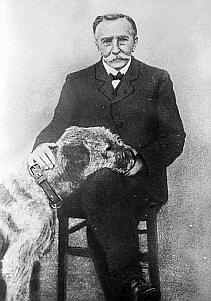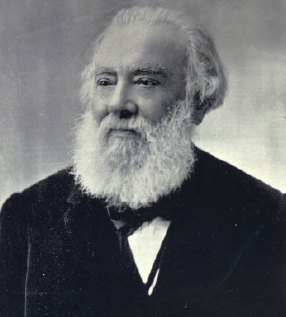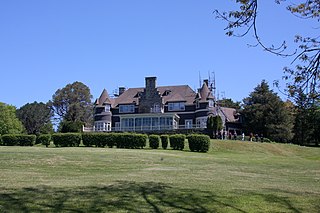
Alexander Graham Bell was a Scottish-born inventor, scientist and engineer who is credited with patenting the first practical telephone. He also co-founded the American Telephone and Telegraph Company (AT&T) in 1885.

Brantford is a city in Ontario, Canada, founded on the Grand River in Southwestern Ontario. It is surrounded by Brant County, but is politically separate with a municipal government of its own that is fully independent of the county's municipal government.

Bell Canada is a Canadian telecommunications company headquartered at 1 Carrefour Alexander-Graham-Bell in the borough of Verdun in Montreal, Quebec, Canada. It is an ILEC in the provinces of Ontario and Quebec; as such, it was a founding member of the Stentor Alliance. It is also a CLEC for enterprise customers in the western provinces.

Walter Seymour Allward was a Canadian monumental sculptor best known for the Canadian National Vimy Memorial. Featuring expressive classical figures within modern compositions, Allward's monuments evoke themes of memory, sacrifice, and redemption. He has been widely praised for his "original sense of spatial composition, his mastery of the classical form and his brilliant craftsmanship".

Events from the year 1876 in Canada.

The County of Brant is a single-tier municipality in the Canadian province of Ontario. Although it retains the word "county" in its name, the municipality is a single-tier municipal government and has no upper tier. The County of Brant has service offices in Burford, Paris, Oakland, Onondaga and St. George. The largest population centre is Paris.

This timeline of the telephone covers landline, radio, and cellular telephony technologies and provides many important dates in the history of the telephone.

The invention of the telephone was the culmination of work done by more than one individual, and led to an array of lawsuits relating to the patent claims of several individuals and numerous companies.

Alexander Melville Bell was a teacher and researcher of physiological phonetics and was the author of numerous works on orthoepy and elocution.

The Bell Telephone Company was the initial corporate entity from which the Bell System originated to build a continental conglomerate and monopoly in telecommunication services in the United States and Canada.
Thomas C. Cowherd was a British-born tinsmith and poet, and father to 16 children in Brantford, Ontario, Canada, including James H. Cowherd, the second earliest manufacturer of telephones to Alexander Graham Bell.

The Brantford Alexanders were a junior ice hockey team in the Ontario Major Junior Hockey League and Ontario Hockey League from 1978 to 1984. The team was based in Brantford, Ontario, Canada.

Alexander Graham Bell honors and tributes include honors bestowed upon him and awards named for him.

Cyrille Duquet was a Canadian goldsmith, flutist, and inventor in Quebec. Originally working in the field of clocks and watches, he was also a passionate jewelry collector.

Beinn Bhreagh is the name of the former estate of Alexander Graham Bell, in Victoria County, Nova Scotia. It refers to a peninsula jutting into Cape Breton Island's scenic Bras d'Or Lake approximately three kilometres southeast of the village of Baddeck, forming the southeastern shore of Baddeck Bay.

Alexander Graham Bell National Historic Site is a 10-hectare (25-acre) property in Baddeck, Cape Breton, Nova Scotia, Canada, overlooking the Bras d'Or Lakes. The site is a unit of Parks Canada, the national park system, and includes the Alexander Graham Bell National Historic Site, which contains the largest repository of artifacts and documents from Bell's years of experimental work in Baddeck. This site was designated a National Historic Site in 1952.
Bell Museum may refer to:

The Bell Homestead National Historic Site, located in Brantford, Ontario, Canada, also known by the name of its principal structure, Melville House, was the first North American home of Professor Alexander Melville Bell and his family, including his last surviving son, scientist Alexander Graham Bell. The younger Bell conducted his earliest experiments in North America there, and later invented the telephone at the Homestead in July 1874. In a 1906 speech to the Brantford Board of Trade, Bell commented on the telephone's invention: "the telephone problem was solved, and it was solved at my father's home".

Professor David Charles Bell, was a Scottish-born scholar, author and professor of elocution. He was an elder brother to Alexander Melville Bell and uncle to Alexander Graham Bell.
















